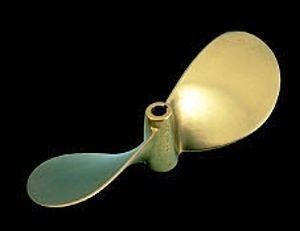@FastOlson I admit I've always sort of taken our electric bilge pump for granted, although I did replace it on principal a few years ago. I replaced a Rule 2000 which may have been original to our 1983 boat with a new Rule 2000. I'm curious what your basis is for the criticism of the Rule pumps? Our seem to have served well, I have used them countless times to pump out the entire bilge when cleaning. The Rule is rated at 2000 gph vs <180 gph for the Jabsco. That seems like a lot to give up - even with two Jabscos our capacity would be well below the Rule even if the Rule doesn't perform up to the rated capacity. What am I missing?
There was a time when a) I believed the Rule pump advertising information, and b) before I read a PS test of real world water movement thru one to a nominal rise ("head") and they measured the thru put.
I believe that Maine Sail has written about this as well.
I nowadays believe that the Jabsco pump is a real world achievement, and the centrifugal pumps (of which Rule is only one brand) are not able to provide the advertised flow in a typical boat.
OTOH, I would never question the Potential Capability of a centrifugal pump under the right circumstances. If the "head" is not too high, the hose is smooth-bore, and there are no major course changes in the routing, they can certainly move about half of that published figure.
An aside (or kind of a case in point), last spring I was 'first on scene' to save a 37 footer sailboat at our moorage. It had about a foot of freeboard left and the cockpit was back-filling thru the drains at a that point. water was working its way around the companionway doors. Our YC has a large (3" line) pump powered by a Honda engine. Lucky for everyone involved it started up and with some priming difficulties, I got the intake strum box down inside a flooded lazaretto and it removed enough water to reverse the down-flooding. What with some quick phone calls, we soon had a local (BoatUS) rep there with his pickup truck full of pumps (!) and he finished the dewatering.
So a centrifugal pump, under the right circumstances is the best way.
Thing is.... there are almost no boats with an optimized pump discharge system.
Over the last several years I have replaced the hose runs for both of our boat's electric pumps and also the pump-and-hose setup for the cockpit manual pump.
The 1988 hoses were ribbed - a bad thing - and on the verge of pin holing.
So, at least in theory, you are not at all wrong, and a "2000" model is better than that smaller ones. If we were to add another "bigger disaster" pump, I might well be one rated for 3500 rpm, and then if we could get 2000 out of it we'd be happy.
Yet another aside: remember that all these dewatering devices are really just there to give you an extra ten minutes to find and stop/slow the leak. Doing the math for a (an example) 1.5 inch hole, approx 2 feet under the water, will raise your eyebrows; it did mine!
About a decade ago we were touring a SantaCruz 52, totally set up for small crew offshore sailing (wonderful boat, but at $750K, way out of our league.) and noticed a slot in the aft cabin sole for a handle for an Edson big pump. The salesman told us that owners referred to that gallon-a-stroke pump as their OMG Pump!

So, no, you're not missing anything. It's just that sometimes advertising will overstate the, ah, benefit of a product....... like those spam pharmacy ads that sometimes sneak into your mailbox!!




